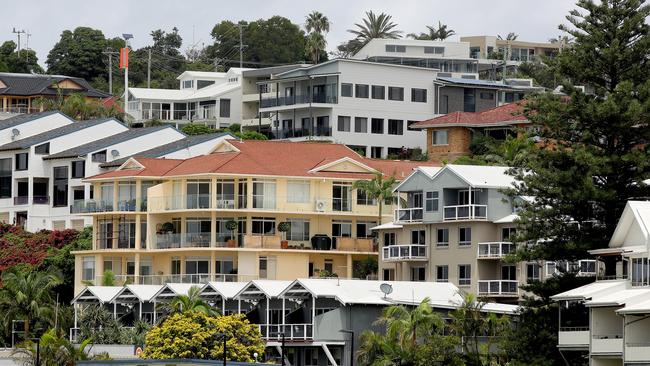Reserve Bank, Federal Reserve interest rate rises to challenge investors this year
The overwhelming majority of current home loan borrowers have never seen their monthly payments go up. Soon that’s going to end.

Business
Don't miss out on the headlines from Business. Followed categories will be added to My News.
The year is going to get challenging for investors. I could just as easily have written “interesting”, but either way you get my drift.
Official interest rates are going up in both Australia and in the US. The two big questions in both places are how quickly and how far.
The local rate rises are critical for property investors – most obviously what happens to variable rate home loans, with owner-occupiers currently paying around 2 per cent and investors around 3 per cent.
The US rate rises will drive what happens on the sharemarket and so to your superannuation, via Wall St.
We haven’t had an official rate rise in Australia since Melbourne Cup Day all the way back in 2010. Since then it’s only been held steady or gone down.
This means that the overwhelming majority of home loan borrowers that have a loan right now have never seen their monthly payments go up, apart for some relatively tiny increases on the odd occasion from their banks.
Those with existing loans have for nearly a dozen years now just got letters from their banks that their repayments were going down or they could leave them unchanged and pay off their loan faster.
Those seeking to borrow for the first time were being told they could borrow ever bigger sums (as they chased ever-rising property prices).
But once “in”, they would find themselves in clover: with the great combination of the value of their property rising every year – galloping in the last two – yet their repayments either falling, or if left unchanged, their home loan being paid off faster.
That is now going to end. Repayments are going up, initially only marginally so that most borrowers won’t feel particular pain. But values will level out or may even fall.
This will prove a mixed blessing for those wanting to buy. Prices might start to look halfway affordable, or at least not running away weekend to weekend; but suddenly they will only be able to borrow less.
It will also play into, in mixed ways, the other great source of finance: the “bank of mum-and-dad”.
On the one hand retirees will be getting – slightly higher than zero – interest rates on their term deposits.
On the other, they might feel poorer as their super returns level off or even fall. With what happens in that space all dependent on what happens on Wall St, and that in turn depends on what the Fed does and how quickly with US rates.
The Fed is now all-but committed to a March rate rise. In the normal course it would kick off with half-a-per cent or even a full 1 per cent.
It won’t. It’ll be soft-softly with just 25 points, with further similar rises at various meetings through the year, depending on how Wall St reacts.
The Fed is totally, and I mean totally, driven by Wall St’s reactions.
In contrast, any sharemarket reaction is never a factor in the RBA’s thinking; half because it knows that Wall St drives our market; half because our RBA is not in bed with local big money the way the Fed is.
Interestingly, while we haven’t had an official rate rise since 2010, the Fed had one as recently as December 2018.
But the different timing is of very little credit to the Fed, and a great deal of credit to Martin Place in Sydney.
The only reason the Fed was lifting rates – and only to 2.25 to 2.5 per cent tops – in the 2017-18 period was that it had cut them all the way to zero during the GFC in 2008 and kept them at zero for years, keeping the rich getting ever more richer.
To former RBA governor Glenn Stevens’s great credit, he didn’t take the official rate below 3 per cent after the GFC; and then only going down to 1.5 per cent right at the end of his term in 2016.
And we only got down to zero (0.1 per cent) as recently as November 2020 under his successor and current governor Philip Lowe.
Only a serious deterioration in the global Covid situation – or a return to lockdowns in Australia – or some other left-field event (or not so left-field, like a Russian invasion of Ukraine that turned seriously ugly), would prevent rate rises.
Inflation is clearly out of the gates in the US; rates should have started going up there six months ago.
At the moment Wall St is betting that soaring corporate profits will boost share prices to offset the impact on valuations of rate rises. Hence the 550-point surge overnight Friday, essentially on the back of Apple’s profit.
While here, that first rate rise is still seen as, well, some time after the “day after tomorrow” – which makes Tuesday’s RBA statement critically, well, “interesting”.
Originally published as Reserve Bank, Federal Reserve interest rate rises to challenge investors this year



